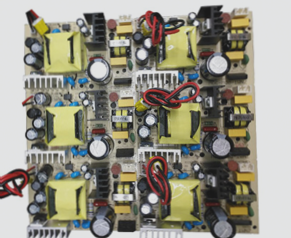The growth of the electronics industry has led to a heightened demand for PCBA assemblies. The production and processing of PCBA encompasses a series of intricate operations. The supply chain and manufacturing chain are relatively extensive. If an issue arises at any stage, it can result in the failure of numerous PCBA boards, leading to negative repercussions. In light of this, quality control in PCB assembly is crucial for ensuring reliable electronic processing. So, what are the key aspects of quality control in PCB processing? Let’s explore!
PCBA processing

1. Holding a pre-production meeting after receiving an order for PCBA processing is crucial. This meeting primarily focuses on analyzing the PCBGerber files and submitting a manufacturability report (DFM) tailored to different customer requirements. Many smaller manufacturers overlook this step, which can lead to quality issues stemming from subpar PCB designs and result in significant rework and repairs.
2. When purchasing and inspecting electronic components for PCBA, it is essential to rigorously control procurement channels. Components should be sourced from reputable distributors and original manufacturers to prevent the use of second-hand or counterfeit materials. Furthermore, establishing a dedicated inspection station for incoming PCBA materials is vital to ensure that components are defect-free. This includes checking the temperature settings of the reflow oven, verifying that fly-line vias are neither blocked nor leaking, and ensuring the board surface is not warped. For ICs, it’s important to confirm that screen printing matches the BOM and to store them under controlled temperature and humidity. Other commonly used materials should also be checked for screen printing quality, appearance, and power measurements.
3. In SMT assembly, the key focus areas are solder paste printing and the reflow oven temperature control system. High-quality laser stencils that meet stringent processing requirements are necessary. Depending on PCB requirements, adjustments may be needed for the steel mesh or U-shaped holes, with stencils created in line with process specifications. Proper temperature control of the reflow oven is critical for solder paste wetting and stencil integrity, and adjustments should follow the standard SOP guidelines. Additionally, strict adherence to AOI testing can significantly reduce defects attributed to human error.
4. During the plug-in process, the design of the mold for wave soldering is paramount. Maximizing yield rates through effective mold usage is a practice that PE engineers must continuously refine and document.
5. For orders requiring PCBA testing, the primary tests conducted include ICT (In-Circuit Test), FCT (Functional Test), aging tests, temperature and humidity tests, and drop tests. The above highlights the main categories of quality control associated with PCBA processing as introduced by the editor.
PCBA processing

1. Holding a pre-production meeting after receiving an order for PCBA processing is crucial. This meeting primarily focuses on analyzing the PCBGerber files and submitting a manufacturability report (DFM) tailored to different customer requirements. Many smaller manufacturers overlook this step, which can lead to quality issues stemming from subpar PCB designs and result in significant rework and repairs.
2. When purchasing and inspecting electronic components for PCBA, it is essential to rigorously control procurement channels. Components should be sourced from reputable distributors and original manufacturers to prevent the use of second-hand or counterfeit materials. Furthermore, establishing a dedicated inspection station for incoming PCBA materials is vital to ensure that components are defect-free. This includes checking the temperature settings of the reflow oven, verifying that fly-line vias are neither blocked nor leaking, and ensuring the board surface is not warped. For ICs, it’s important to confirm that screen printing matches the BOM and to store them under controlled temperature and humidity. Other commonly used materials should also be checked for screen printing quality, appearance, and power measurements.
3. In SMT assembly, the key focus areas are solder paste printing and the reflow oven temperature control system. High-quality laser stencils that meet stringent processing requirements are necessary. Depending on PCB requirements, adjustments may be needed for the steel mesh or U-shaped holes, with stencils created in line with process specifications. Proper temperature control of the reflow oven is critical for solder paste wetting and stencil integrity, and adjustments should follow the standard SOP guidelines. Additionally, strict adherence to AOI testing can significantly reduce defects attributed to human error.
4. During the plug-in process, the design of the mold for wave soldering is paramount. Maximizing yield rates through effective mold usage is a practice that PE engineers must continuously refine and document.
5. For orders requiring PCBA testing, the primary tests conducted include ICT (In-Circuit Test), FCT (Functional Test), aging tests, temperature and humidity tests, and drop tests. The above highlights the main categories of quality control associated with PCBA processing as introduced by the editor.



